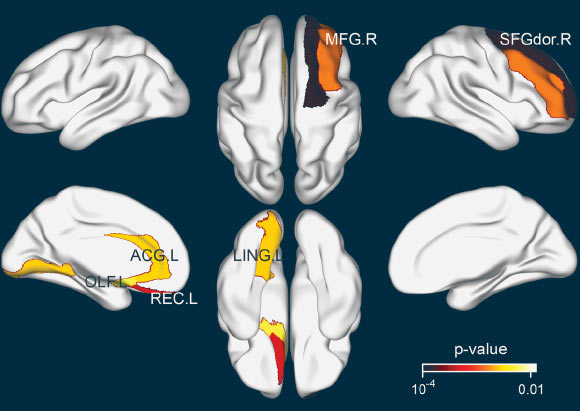Habitual tea drinking has positive effects on brain organization and gives rise to greater efficiency in functional and structural connectivity, according to a new study led by the National University of Singapore (NSU).

Li et al provide the first evidence of the positive contribution of tea drinking to brain structure. Image credit: Larisa Myshun.
Tea has been a popular beverage since antiquity times, with records referring to consumption dating back to the dynasty of Shen Nong (2700 BCE) in China.
Tea is consumed in diverse ways, with brewed tea and products with a tea ingredient extremely prevalent in Asia, especially in China and Japan. It also is more fashionable than ever in Western countries.
A growing literature has demonstrated that tea consumption is beneficial to human health, including mood improvement, risk reduction of cognitive decline, cardiovascular disease prevention, lower cancer incidence, and reduced mortality.
“Our results offer the first evidence of positive contribution of tea drinking to brain structure, and suggest that drinking tea regularly has a protective effect against age-related decline in brain organization,” said lead author Dr. Feng Lei, a researcher in the Department of Psychological Medicine, the NSU Yong Loo Lin School of Medicine.
For the study, Dr. Lei and colleagues recruited 36 adults aged 60 and above, and gathered data about their health, lifestyle, and psychological well-being.
The participants also had to undergo neuropsychological tests and magnetic resonance imaging (MRI).
The scientists found that individuals who consumed green tea, oolong tea, or black tea at least four times a week for about 25 years had brain regions that were interconnected in a more efficient way.

Brain regions exhibiting significant differences in structural nodal efficiency between the tea drinking group and the non-tea drinking group. Abbreviations: SFGdor.R – right superior frontal gyrus (dorsal), MFG.R – right middle frontal gyrus, OLF.L – left olfactory, REC.L – left gyrus rectus, ACG.L – left anterior cingulate and paracingulate gyri, LING.L – left lingual gyrus, which primarily reside in the frontal cortex. Image credit: Li et al, doi: 10.18632/aging.102023.
“Our study comprehensively investigated the effects of tea drinking on brain connectivity at both global and regional scales using multi-modal imaging data (i.e., functional and structural imaging) and provided the first compelling evidence that tea drinking positively contributes to brain structure making network organization more efficient,” they said.
“The study suggests that tea drinking is effective in preventing (slowing) or ameliorating cognitive decline and that tea drinking might be a simple lifestyle choice that benefits brain health.”
The study was published in the journal Aging.
_____
J. Li et al. 2019. Habitual tea drinking modulates brain efficiency: evidence from brain connectivity evaluation. Aging 11: 3876-3890; doi: 10.18632/aging.102023







